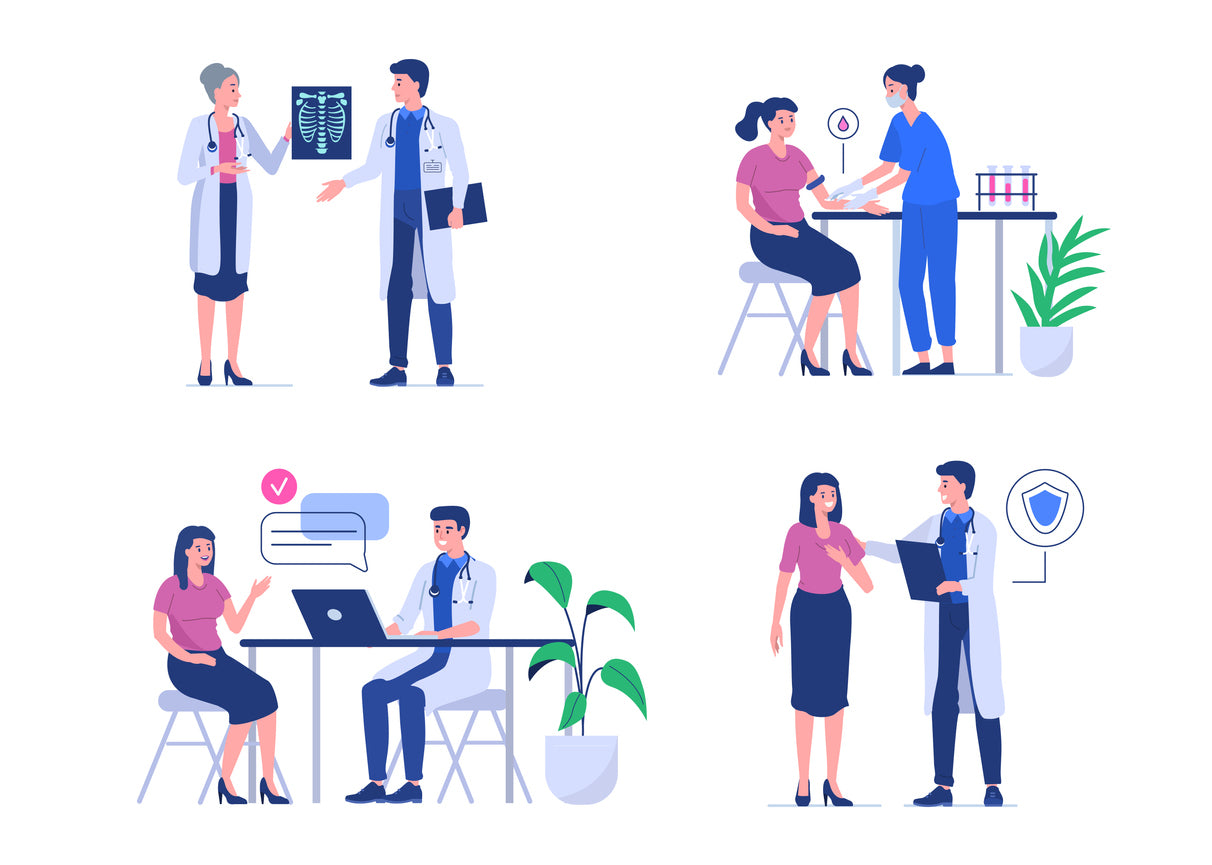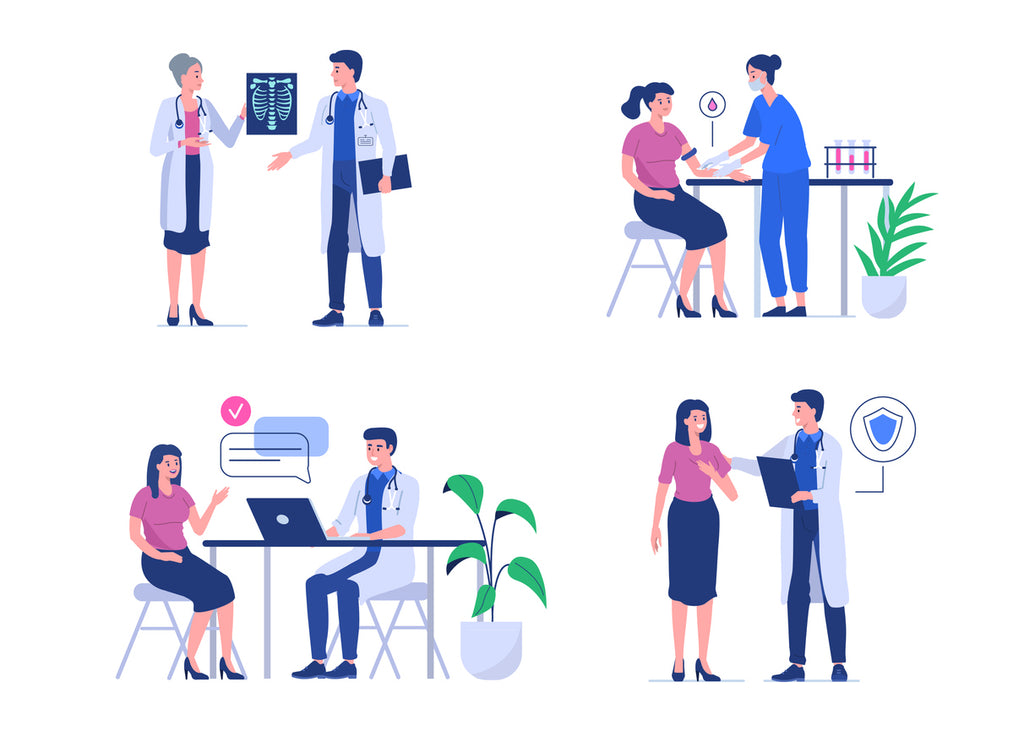In the pursuit of wellness, understanding the nuances of how our bodies age can be a valuable tool. To be clear, aging is natural and preventing it isn’t necessarily the only path to wellness. But aging is also essentially deterioration. That means that the knowledge of how our bodies age and, by extension, how we could lessen the effects or slow the process, can help us achieve greater health for longer. The secret to grasping these hidden indicators lies in aging biomarker tests. You may have heard of detailed blood tests designed to tell you your biological age. Did you know, though, that there are many other ways to determine the well-being and “age” of certain aspects of your body? And you can do them from home! Let’s talk about the aging biomarker tests you can undertake from the comfort of your abode.
Sitting Rising Test to Evaluate Physical Function
This simple exercise can be performed without any equipment. Start with 10 points. Sit with your legs crossed, then try to stand without using your hands or anything else to assist you. Each time you use an aid, you lose a point. If you lose balance, you lose half a point. Those with a high score (above eight) are believed to be two times less likely to die in the next six years.
Here is a tutorial if you need a visual!
Postural Hypotension for Blood Pressure Measurement
Also known as orthostatic blood pressure, postural hypotension determines blood pressure and pulse rate in someone who has been lying down for five minutes, then standing for three. If blood pressure drops significantly during this shift, it can indicate anything from a heart issue or endocrine disorder to dehydration and more. This is a good indicator of your general wellness status, making it a great option among aging biomarker tests. Purchase a blood pressure monitor and try it out!
Hearing Tests
There is a reason so many elderly individuals have hearing aids! It tends to be one of the first things to go when humans age. For this reason, it can be a wonderful way to explore aging biomarker tests. While getting hearing tests done at a specialist's office is obviously ideal, there are ways to measure your ability at home. The smartphone app called Mimi is a simple, accessible resource.
Cognitive Processing Speed
Measuring your verbal memory, motor speed, reaction time, and more is beneficial in analyzing one’s overall health and “age.” Memory Health Check has a variety of aging biomarker tests of this sort. Spend an evening exploring them!
The 10-Second One-Legged Stance to Evaluate Physical Function
Similar to the sitting rising test, this one helps determine your physical fitness. Some research suggests that your chance of death in the next seven years increases by 84% if you cannot complete this exercise. Don’t let that frighten you though! It is a relatively simple one. All you have to do is stand on one leg, barefoot, and balance for 10 seconds. Channel your inner yogi!
Forced Expiratory Volume in One Second (FEV1)
This member of the aging biomarker tests category is actually just a great little go-to for us all, especially when so many respiratory illnesses have been a challenge as of late. The FEV1 measures the volume of air that you can exhale in a single second. This is done using a spirometer, which you can purchase inexpensively. Amazon even has a peak flow meter, measuring FEV1 and PEF (peak flow rate) digitally for only $33. A steal! A research company called Calico found that FEV1 might be a more significant indicator of biological age than body mass index or hand grip strength.
Grip Strength
That said, let’s talk about the aforementioned grip strength! This is actually an old-school, popular method of determining longevity. A study of more than 500,000 adults between 40 and 69 years old correlated grip strength to their rates of healthy outcomes when faced with health challenges like cardiovascular disease and even cancer. So, this one isn’t to be counted out just yet! A dynamometer can help you determine yours.
VO2 Max Test
Also called the maximal oxygen uptake test, this determines the maximum amount of oxygen that your body employs during exercise. Because of that, it can be a great tool among aging biomarker tests to evaluate cardiovascular health. In a 2018 study published in the Journal of American College of Cardiology, 5,000 middle-aged men were followed. Those with the top 5% of VO2 lived almost five years longer than those with the bottom 5%. The best news is that devices like the Apple Watch can monitor heart rate during exercise and then estimate VO2 max via sophisticated algorithms. Ah, to live in the 21st century!
Facial Age Test
All of our faces are beautiful and aging faces aren’t a negative! We just wanted to get that out there. Nonetheless, facial aging can be a subject of aging biomarker tests. Artificial intelligence technology is now able to adeptly analyze facial features to produce a perceived age and skin health report. This not only helps you add to the big picture of your overall wellness and biological age. It can also be a way of tracking skin problems and deciding which treatments are providing the maximum positive impact. It’s a double-pronged win, if you ask us! Search “AI facial age test” wherever you download your apps to explore the options.
Continuous Glucose Monitoring
While you might at first think that this is a tool for diabetics, and it is, continuous glucose monitoring is also considered one of the main aging biomarker tests. It can showcase trends in blood glucose levels early on, before they develop into issues that may eventually be considered comorbidities, like diabetes. Of course, this is one of the more invasive aging biomarker tests, since you’ll need to wear a device that pricks the skin. However, if you have reason to believe you’re at risk for developing a disease like diabetes, this could be worth the while. It never hurts to have a conversation with your doctor.
Aging biomarker tests offer a window into our biological aging process. This provides valuable information that can guide us toward a life that is healthier for longer—one of the greatest things we can achieve. By making sophisticated health monitoring a part of our regular routines, we empower ourselves with knowledge. Plus, your doctor will thank you for this background info, which will make treating any problems that do arise quicker and more impactful.
Feel younger for longer? Don’t mind if we do!


